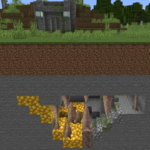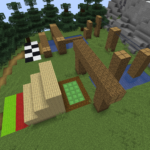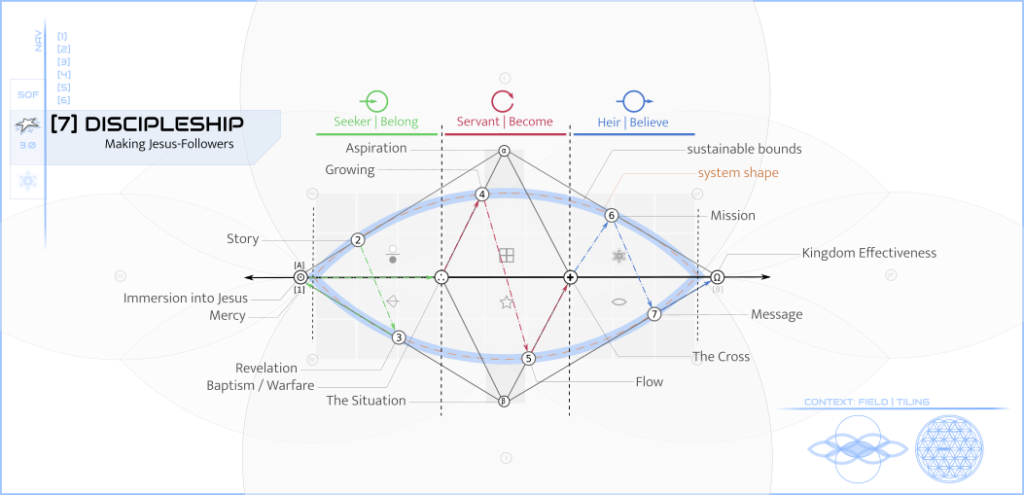The Journey Map
The Journey Map is an integrated allegorical framework for individual and communal spiritual journey. It is intended to produce mission-saturated transformative movements. Drawing from ancient texts, centuries of spiritual practice, and hundreds of active case studies, the framework illustrates a “map” for change-agents to understand their position in the spiritual landscape and the possibilities for transformative experience and action.
Just like any map, The Journey Map should be interpreted as descriptive rather than prescriptive: it’s more useful for understanding the contours of the spiritual journey than it is for telling people how to have one or where to go. This means people may move freely any direction on the map, though there are “paths” that are historically “well worn” or typical, and the map can provide insight into how to get from point A to point B.

See The Journey Map explained in the this video.
As an allegorical framework, The Journey Map describes personal development through pursuit of mission in a way that helps groups and individuals:
- position themselves on their spiritual journey
- discern what actions are critical
- learn and practice essential skills
- manage change towards greater incarnation of spiritual realities and greater manifestation of “the world that ought to be” both inwardly into our souls and outwardly into the world.
The map is used by matching the “shape” of an individual or groups’ experience to positions on the map. These positions categorizes objectives, tasks, and tools for people in is area of their journey.
Positions on the Map
The Three Lands (Phases)
There are three “lands” or phases of the spiritual journey the represent different relational orientations towards mission and community identity. These three phases can be thought of as The 3Bs: [3] Belong-Become-Believe. To follow the metaphor of lands, this would be The Land of Belonging, The Land of Becoming, and The Land of Believing.
Seven Positions (Zones)
The Map includes seven positions and two transition zones.
The Land of Belonging
The Land of Becoming
The Land of Believing
Adaptations
[7] The Spiritual Journey

Adaptation of The Journey Map to the individual spiritual journey according to the Way of Jesus.
[7] The Promised Land
[Working on this one.]
Meta
The Journey Map was developed as a tool for discipleship and missional community by the UnusualKingdom PraxCom while working simultaneously on Mágoulo’s School for the Spiritually Gifted and the Awakened Village project. It was built from the foundation of The Way of Jesus framework for the life and ministry of Jesus, which allegorically identifies key movements for communities and individuals on a spiritual journey. Skills and activities were then developed to contextualize the allegory to missional-discipleship in post-church and post-modern contexts using the Frames of Systems VS and Universe VS. This contextualization also makes use of the Semantic Ontology Framework (SOF) for systems design and sustainability.











